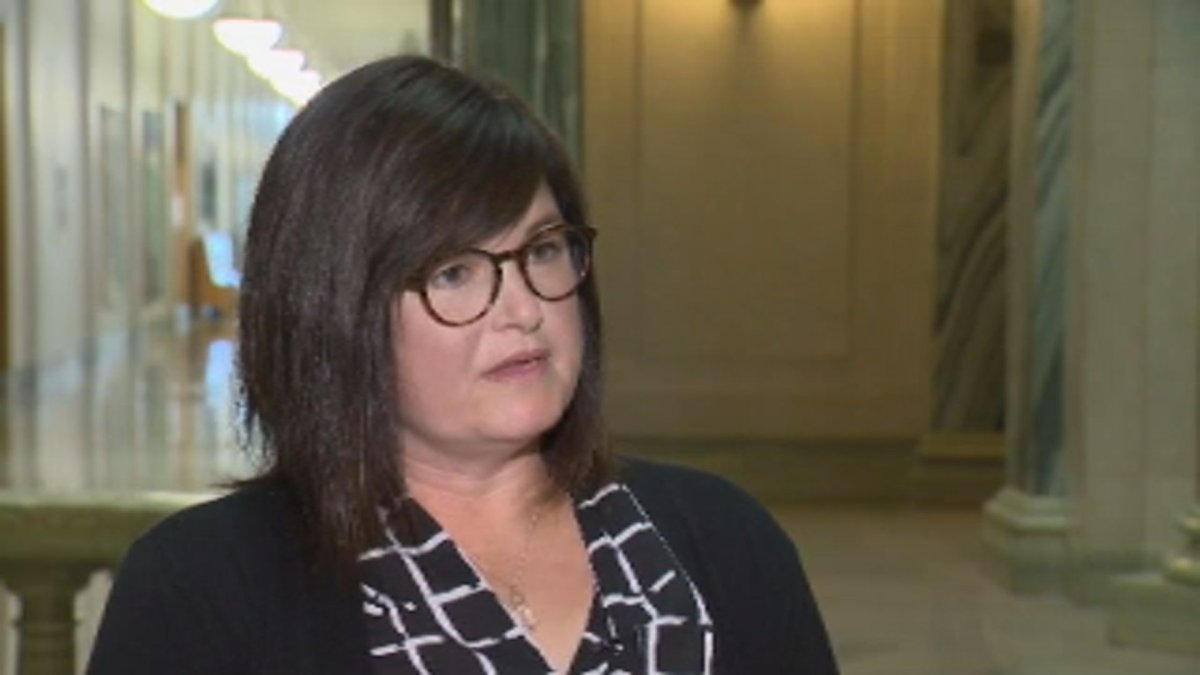The province has approved $51 million in funding for school divisions, which welcomed students back into their classrooms amid the coronavirus pandemic on Tuesday.

The money is for “emergent one-time expenses associated with a safe return to school,” Saskatchewan Education Minister Gordon Wyant said at a press conference Tuesday morning.
“I would expect school divisions… would likely be anticipating that they would be receiving some additional funds,” Wyant said. “There are a number of school divisions, at least the ones that I’ve talked to, that were already making some plans.”
The minister said he now expects school divisions can go full-steam ahead.
The money comes from Saskatchewan’s COVID-19 contingency fund for education — a “pool of funding” that consists of about $150 million from provincial and federal governments as well as school division savings. About 70 per cent of it is being made available directly to school divisions through an application process.
Forty-six applications totaling around $81 million were submitted at the end of August, Wyant said. While all of the applications were approved, the minister said the $51 million was arrived at by working with school divisions on spending priorities.
Of that $51 million approved Tuesday, $41 million is “new funding,” said Wyant, while $10 million is the remaining school division savings. It’s being concentrated in the following areas:
- $19.1 million for sanitization, including 191 new staff.
- $6 million for equipment and furniture.
- $13.2 million for supports for immunocompromised students, including 150 new teachers and staff.
- $9.5 million for additional distance learning capacity, including 102 new teachers and staff.
- $4 million for technology upgrades.
In total, the money will fund 443 new employees, from custodians to support staff to teachers. These new positions will be in addition to the 200 created as a result of a funding increase in the 2020-21 provincial budget, the minister confirmed.

Get weekly health news
Hiring the new employees will be up to the school divisions, Wyant said, noting some school divisions have already started the process of expanding their staffing compliments.
“We’ll be continuing to monitor that,” he said, acknowledging that some schools do face challenges with overcrowding and that finding additional space to allow for physical distancing could be challenging in some cases.
Although the official Opposition said the funding announcement is welcome, the timing is off.
“This money would have been, I think, better spent, better allocated at least a month ago or two months ago,” said Carla Beck, the NDP’s education critic.
“We know that social distancing, reduced class sizes are important factors in reducing transmission in our schools,” she said. “Why we’re waiting until the first day of school, first day back, to be look at additional teachers, confirmation of those additional teachers, really defies logic.”
The minister said he’s confident in the local plans’ safety protocols, many of which include additional measures, such as mask-wearing.
The government anticipates there will be a demand for substitute teachers this school year above and beyond what’s in the school divisions’ budgets, Wyant said.
“We don’t know what that number’s going to be,” he said. “We will be assessing any additional needs of school divisions as we go. Substitute teachers may well be one of those things.
“That was something we didn’t consider to be an immediate priority.”
While operating funding is usually confirmed after schools’ enrolments are submitted at the end of September, this year, the ministry is delaying grant redistribution until January.
After Tuesday’s announcement, $64 million remains for subsequent rounds of applications in the COVID-19 contingency fund for education. The next intake will be on Dec. 1.
The ministry reiterated it has allocated $10 million for expenses related to personal protective equipment (PPE) and that $2.3 million has been spent to procure six million masks for the school divisions. The ministry said it will continue working with school divisions to determine PPE needs throughout the school year.
The rest of the money has been expensed from school divisions’ savings to date.

Questions about COVID-19? Here are some things you need to know:
Symptoms can include fever, cough and difficulty breathing — very similar to a cold or flu. Some people can develop a more severe illness. People most at risk of this include older adults and people with severe chronic medical conditions like heart, lung or kidney disease. If you develop symptoms, contact public health authorities.
To prevent the virus from spreading, experts recommend frequent handwashing and coughing into your sleeve. They also recommend minimizing contact with others, staying home as much as possible and maintaining a distance of two metres from other people if you go out. In situations where you can’t keep a safe distance from others, public health officials recommend the use of a non-medical face mask or covering to prevent spreading the respiratory droplets that can carry the virus. In some provinces and municipalities across the country, masks or face coverings are now mandatory in indoor public spaces.
For full COVID-19 coverage from Global News, click here.










Comments